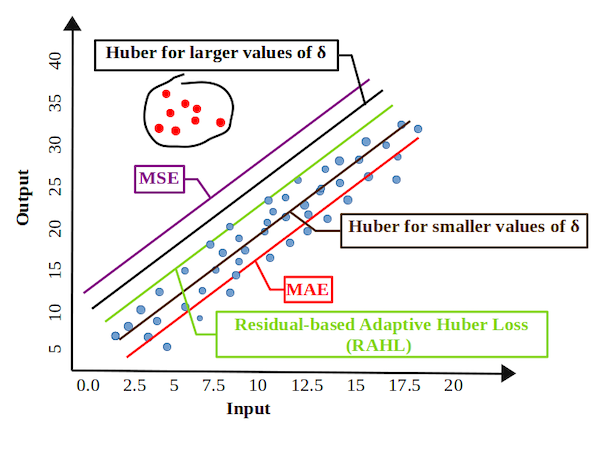Residual-based Adaptive Huber Loss (RAHL) - Design of an Improved Huber Loss for CQI Prediction in 5G Networks

Abstract
The Channel Quality Indicator (CQI) plays a pivotal role in 5G networks, optimizing infrastructure dynamically to ensure high Quality of Service (QoS). Recent research has focused on improving CQI estimation in 5G networks using machine learning. In this field, the selection of the proper loss function is critical for training an accurate model. Two commonly used loss functions are Mean Squared Error (MSE) and Mean Absolute Error (MAE). Roughly speaking, MSE put more weight on outliers, MAE on the majority. Here, we argue that the Huber loss function is more suitable for CQI prediction, since it combines the benefits of both MSE and MAE. To achieve this, the Huber loss transitions smoothly between MSE and MAE, controlled by a user-defined hyperparameter called delta. However, finding the right balance between sensitivity to small errors (MAE) and robustness to outliers (MSE) by manually choosing the optimal delta is challenging. To address this issue, we propose a novel loss function, named Residual-based Adaptive Huber Loss (RAHL). In RAHL, a learnable residual is added to the delta, enabling the model to adapt based on the distribution of errors in the data. Our approach effectively balances model robustness against outliers while preserving inlier data precision. The widely recognized Long Short-Term Memory (LSTM) model is employed in conjunction with RAHL, showcasing significantly improved results compared to the aforementioned loss functions. The obtained results affirm the superiority of RAHL, offering a promising avenue for enhanced CQI prediction in 5G networks.